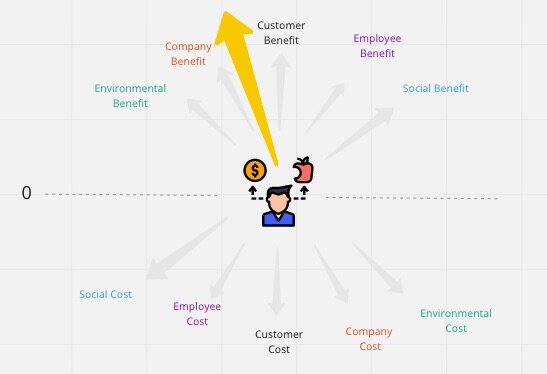More lessons from restaurants …
Back in March of 2009 I wrote a post about what I’d learned about self-organizing teams from being part of a restaurant. Fast forward 15 years and that post still rings mostly true to me and sadly I am no longer part of a restaurant. Nonetheless, I was speaking with a friend, Octavia, the other day about the differences between two restaurants that she owns and operates.
Octavia expressed a curiosity on why the culture at each of her restaurants seemed so different. Her observations were that the staff at the smaller restaurant (we’ll call ‘Cabin’) are much more collaborative and happy than staff at the larger restaurant (we’ll call ‘Mansion’). Octavia observed Mansion staff seemingly more silo’d and focused simply on completing their shifts. She mentioned that it seems that Cabin staff have more time to think; to plan their week. They would discuss who was coming in during the upcoming week, what events were scheduled, and how they could each help. Turnover at Cabin is much lower than Mansion.
Mansion is open 7 days a week while Cabin is open only 5 days a week, Wednesday through Sunday. Mansion has much larger revenue than Cabin and requires many more people to operate.
This is an example of scaling/descaling operational capacity. I think two things may be at play here:
The importance of a regular business rhythm
The impact of relatively small and stable teams
Cabin has a natural business rhythm denoted by a clear beginning and end to the week. People start their week Wednesdays and finish their week Sundays. The team is relatively stable as most people want to work 4-5 shifts per week and that covers most of the effort for the week. They have a defined break. They have time to reset and plan for the coming week TOGETHER. Communication is simpler because fewer people are involved, and there is frequent cross-over of those people during the week.
Mansion on the other hand seems to, for most team members, have a purely daily cadence. There are many, many people required to operate the restaurant and those people are required in multiple combinations/permutations to cover the 7 day per week operating schedule. There is no collective break and fewer opportunities to reset and plan together. Communication becomes more difficult because there are so many people involved and less frequent cross-over hinders that communication. This NOT abnormal or bad! This is a very well functioning large scale restaurant.
Because Octavia is constantly looking at how to improve, she was curious about the differences in culture and perhaps wondering what the impact would be if Mansion had a culture closer to that of Cabin. Sound familiar? There might be many organizational shifts one could make to this end but I do think that they would have to address Octavia’s questions:
How to create the environment for greater collaboration?
How to create an environment to increase employee happiness and retention?
How to create the conditions where time can be set aside (prioritized) to plan together?
I think these might all be related to smaller, more stable teams with a defined cadence that includes a pause for collective planning. A first step might be to create a business rhythm at Mansion that would allow individuals to sync on a weekly or bi-weekly basis. One interesting read I might suggest is Daniel Pink’s ‘When’ that describes the importance of starts, stops, middles, and rests. Those of us in the software industry are all too familiar with the trap of the ‘feature factory’ that is simply an endless iterative cycle, sprint after sprint with no pauses or time for reflection on goals and direction. Creating regular contextual frames for the team, whether in-person or asynchronously, may start to shift how team members view their work and their reliance on each other. Creating teams of people working similar schedules might be an option (recognizing that there will always be some people unavailable) to foster more cross-over communication. Of course, as always, it’s probably best to ask the PEOPLE themselves! They will have lots of ideas of how they’d like to see their environment shift towards a more fulfilling experience.
I don’t pretend to believe that these approaches might all be possible in the restaurant business, but I do believe it’s worth investigating how to move incrementally closer towards Octavia’s desire to have a Cabin culture at Mansion.










